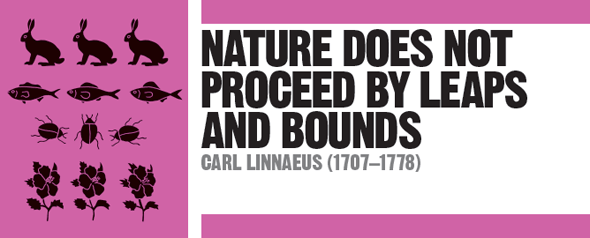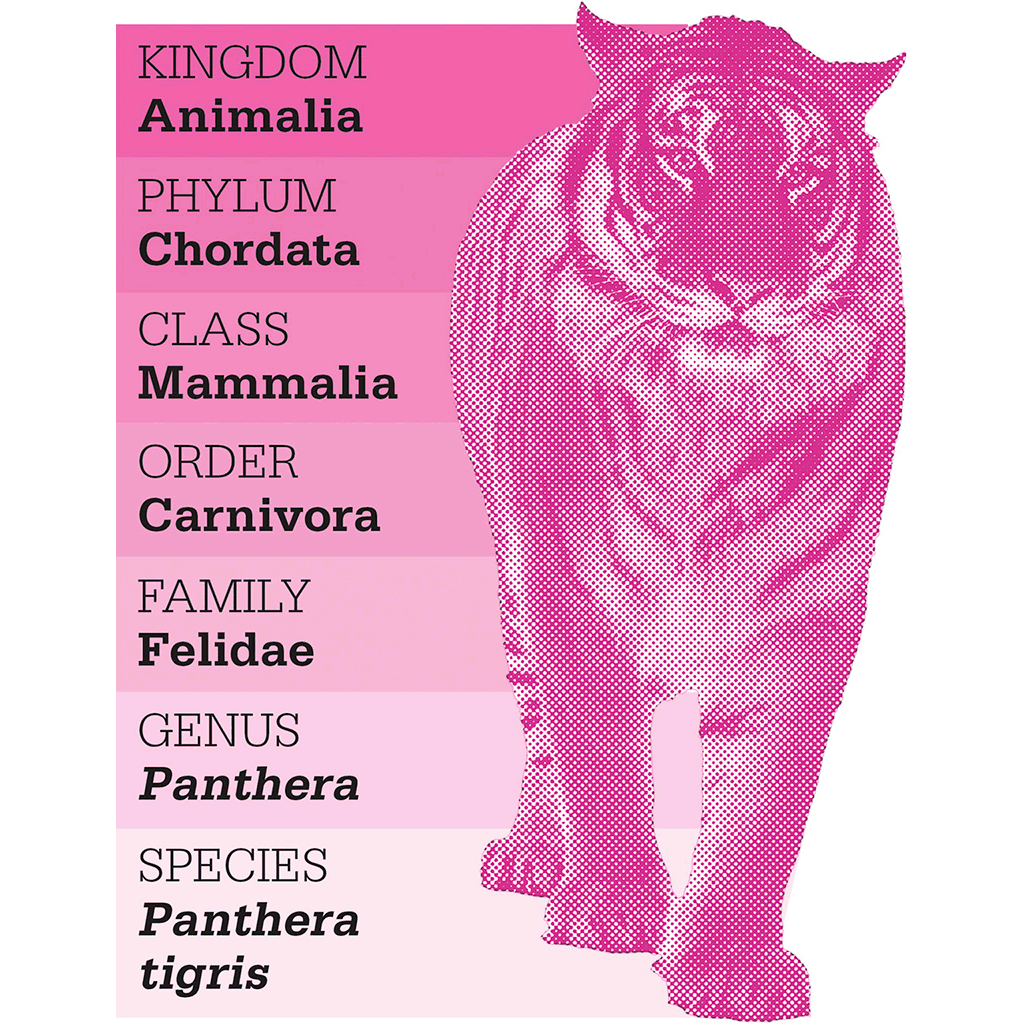
IN CONTEXT
Biology
c.320 BCE Aristotle groups similar organisms on a scale of increasing complexity.
1686 John Ray defines a biological species in his Historia Plantarum.
1817 French zoologist Georges Cuvier extends the Linnaean hierarchy in his study of fossils as well as living animals.
1859 Charles Darwin’s On the Origin of Species sets out how species arise and are related in his theory of evolution.
1866 German biologist Ernst Haeckel pioneers the study of evolving lineages, known as phylogenetics.
1950 Willi Hennig bases a new system of classification on cladistics, which looks for evolutionary links.
The classification of the natural world into a clear hierarchy of groups of named and described organisms is a foundation stone of the biological sciences. These groupings help to make sense of life’s diversity, allowing scientists to compare and identify millions of individual organisms. Modern taxonomy – the science of identifying, naming, and classifying organisms – began with the Swedish naturalist, Carl Linnaeus. He was the first to devise a systematic hierarchy, based on his wide-ranging and detailed study of physical characteristics of plants and animals. He also pioneered a way of naming different organisms that is still in use today.
The most influential of early classifications was that of the Greek philosopher Aristotle. In his History of Animals, he grouped similar animals into broad genera, distinguished the species within each group, and ranked them on a scala naturae or “ladder of life” with 11 grades of increasing complexity in form and purpose, from plants at the base to humans at the apex.
Over the ensuing centuries, a chaotic multiplicity of names and descriptions of plants and animals appeared. By the 17th century, scientists were striving to set out a more coherent and consistent system. In 1686, English botanist John Ray introduced the concept of the biological species, defined by the ability of plants or animals to reproduce with one another, and this remains the most widely accepted definition today.
In 1735, Linnaeus produced a classification in a 12-page booklet that grew into a multivolume 12th edition by 1778 and developed the idea of the genus into a hierarchy of groupings based on shared physical characteristics. At the top were three kingdoms: animals, plants, and minerals. Kingdoms were divided into phyla, then classes, orders, families, genera, and species. He also stabilized the naming of species by using a two-part Latin name, with one name for the genus and another for a species within that genus, as in Homo sapiens – Linnaeus was the first to define humans as animals.

God-given order
For Linnaeus, classification revealed that “nature does not proceed in leaps and bounds” but rather in its God-given order. His work was the fruit of numerous expeditions across Sweden and Europe in search of new species. His classification system paved the way for Charles Darwin, who saw the evolutionary significance of its “natural hierarchy”, with all species in a genus or family related by descent and divergence from a common ancestor. A century after Darwin, German biologist Willi Hennig developed a new approach to classification, called cladistics. To reflect their evolutionary links, this groups organisms into “clades” with one or more shared unique characteristics, which they have inherited from their last common ancestor and which are not found in more distant ancestors. The process of classification by clades continues to this day, with species reassigned new positions as fresh, often genetic, evidence is found.

Linnaeus’s system groups organisms according to shared characteristics. A tiger belongs to the cat family Felidae, which in turn belongs to the order Carnivora, in the class Mammalia.
CARL LINNAEUS

Born in 1707 in rural southern Sweden, Carl Linnaeus studied medicine and botany in the universities of Lund and Uppsala, and took a degree in medicine in the Netherlands in 1735. Later that year he published a 12-page booklet called Systema Naturae, which outlined a system of classification for living organisms. After further travels in Europe, Linnaeus returned to Sweden in 1738 to practise medicine before being appointed professor of medicine and botany at Uppsala University. His students, most famously Daniel Solander, travelled the world collecting plants. With this vast collection, Linnaeus expanded his Systema Naturae through 12 editions into a multivolume work, more than 1,000 pages long, encompassing more than 6,000 species of plants and 4,000 animals. By the time he died in 1778, Linnaeus was one of the most acclaimed scientists in Europe.
Key works
1753 Species Plantarum
1778 Systema Naturae, 12th edition
See also: Jan Swammerdam • John Ray • Jean-Baptiste Lamarck • Charles Darwin